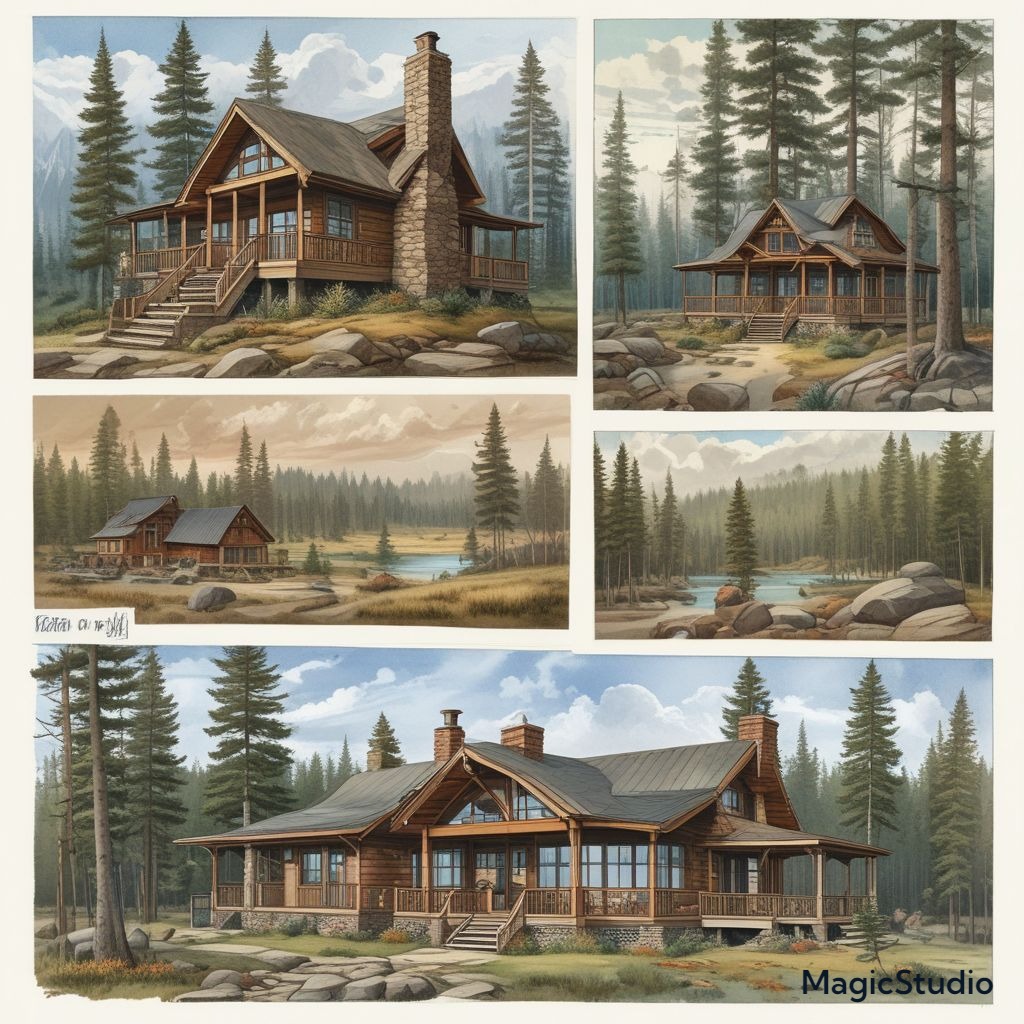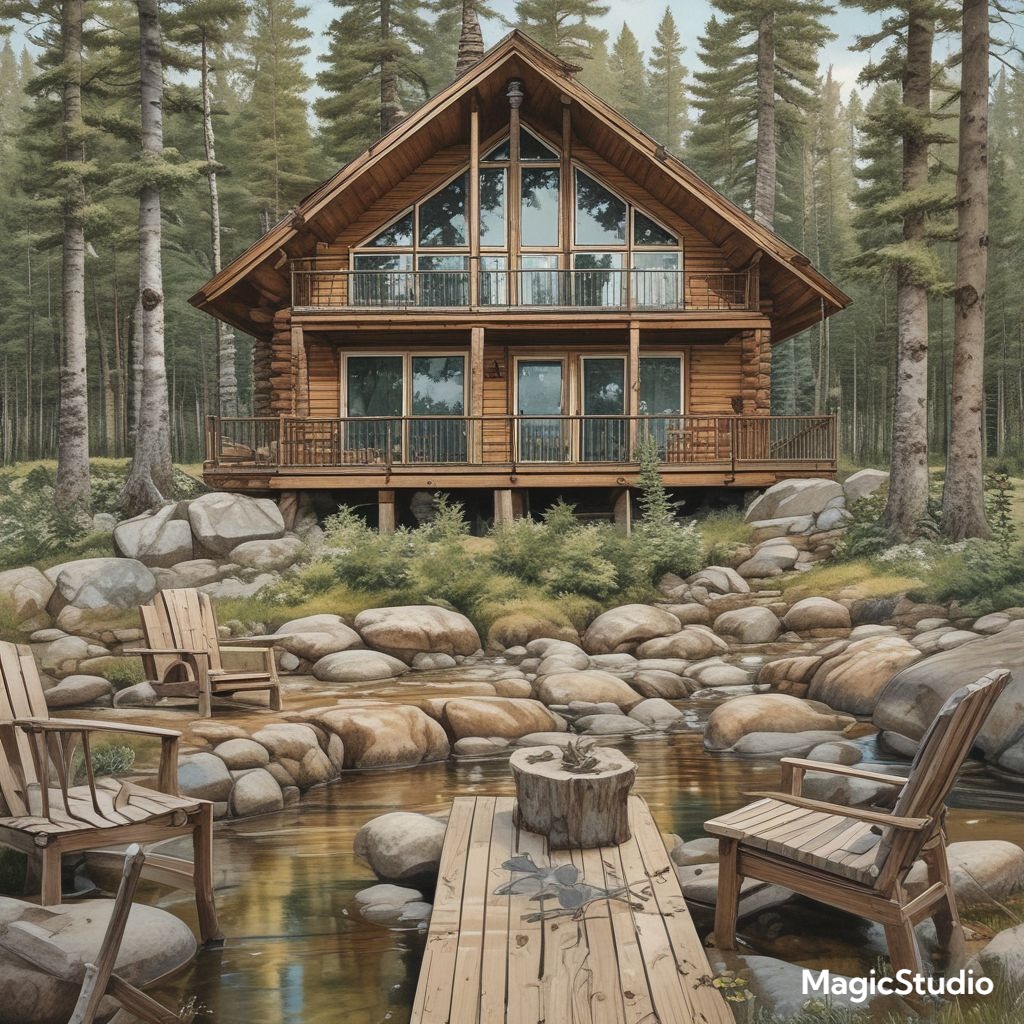Building a modern cabin is a dream for many. With the growing popularity of minimalist design and sustainable living, these cozy retreats offer a unique blend of style and practicality. Whether you’re looking for a weekend getaway or a permanent residence, a 3-bedroom modern cabin plan offers a perfect balance of space and functionality. This article explores 46 design ideas to inspire your modern cabin project, blending current trends in the US and EU, incorporating color palettes, design styles, and innovative features.
Open Floor Plan with Expansive Windows
A defining characteristic of modern cabin design is an open floor plan, creating a sense of spaciousness and blurring the boundaries between indoor and outdoor living. Floor-to-ceiling windows, especially in the living area and kitchen, bring natural light and breathtaking views, making the cabin feel expansive. This design maximizes the connection to the surrounding nature, creating a seamless flow between the interior and exterior. In the US, this trend is embraced for its functionality and airy feel, while in the EU, it’s popular for its ability to bring the outdoors in, especially in countries with mild climates.
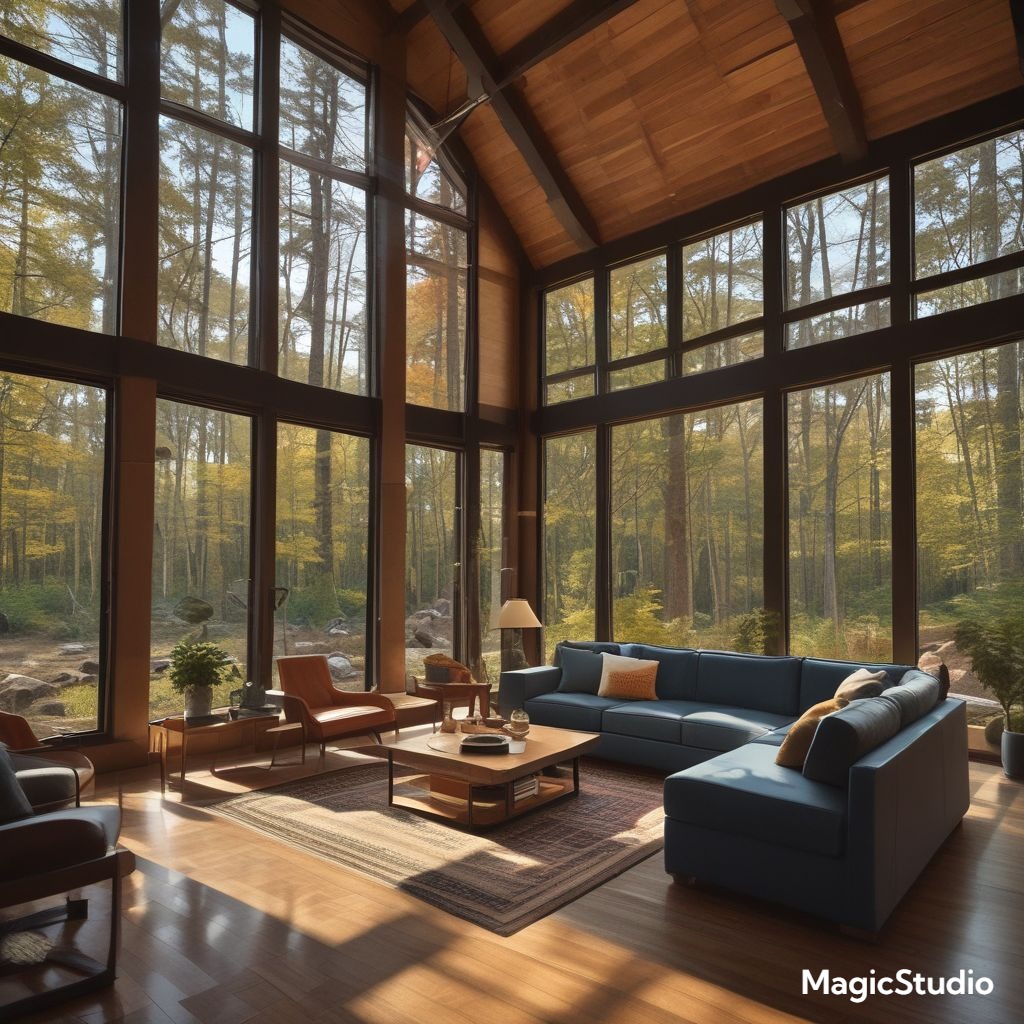
Warm Wood Accents and Natural Materials
Modern cabins often feature a harmonious blend of natural materials, particularly wood. Utilizing sustainable and locally sourced wood not only adds warmth and texture but also aligns with the eco-conscious ethos of modern design. This includes exposed beams, wood flooring, and wooden furniture, creating a cozy and inviting atmosphere. In the US, reclaimed wood is a popular choice for its sustainable appeal, while in the EU, Scandinavian design often incorporates light wood tones and minimalist furniture. This connection to natural elements creates a soothing and relaxing ambiance.
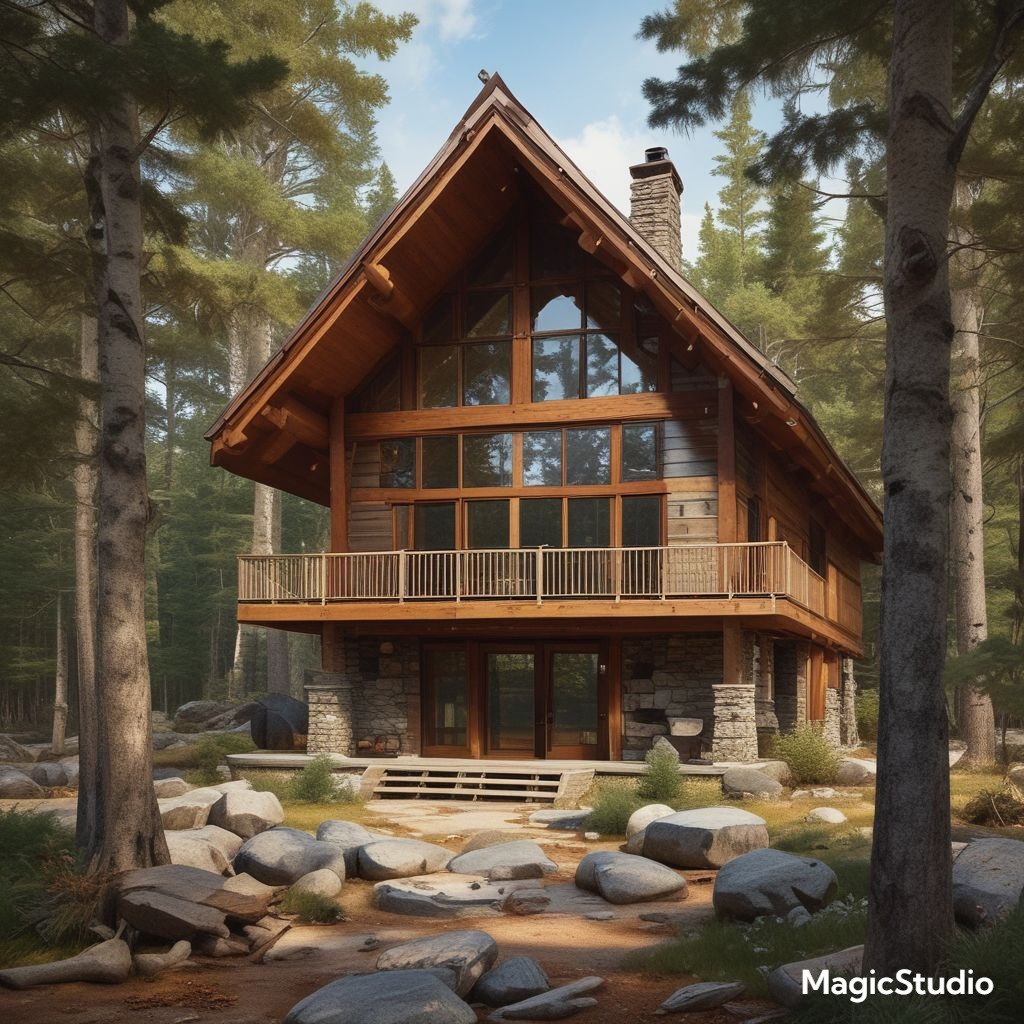
Minimalist Design with Clean Lines
Modern cabin design embraces simplicity and functionality. Clean lines, minimal ornamentation, and a focus on practical elements create a sense of calm and order. This approach allows the natural beauty of the surroundings to take center stage. In the US, minimalist design is often associated with a streamlined and uncluttered aesthetic, while in the EU, it reflects a focus on functionality and a sense of understated elegance. The absence of excessive details creates a space that feels both modern and timeless.
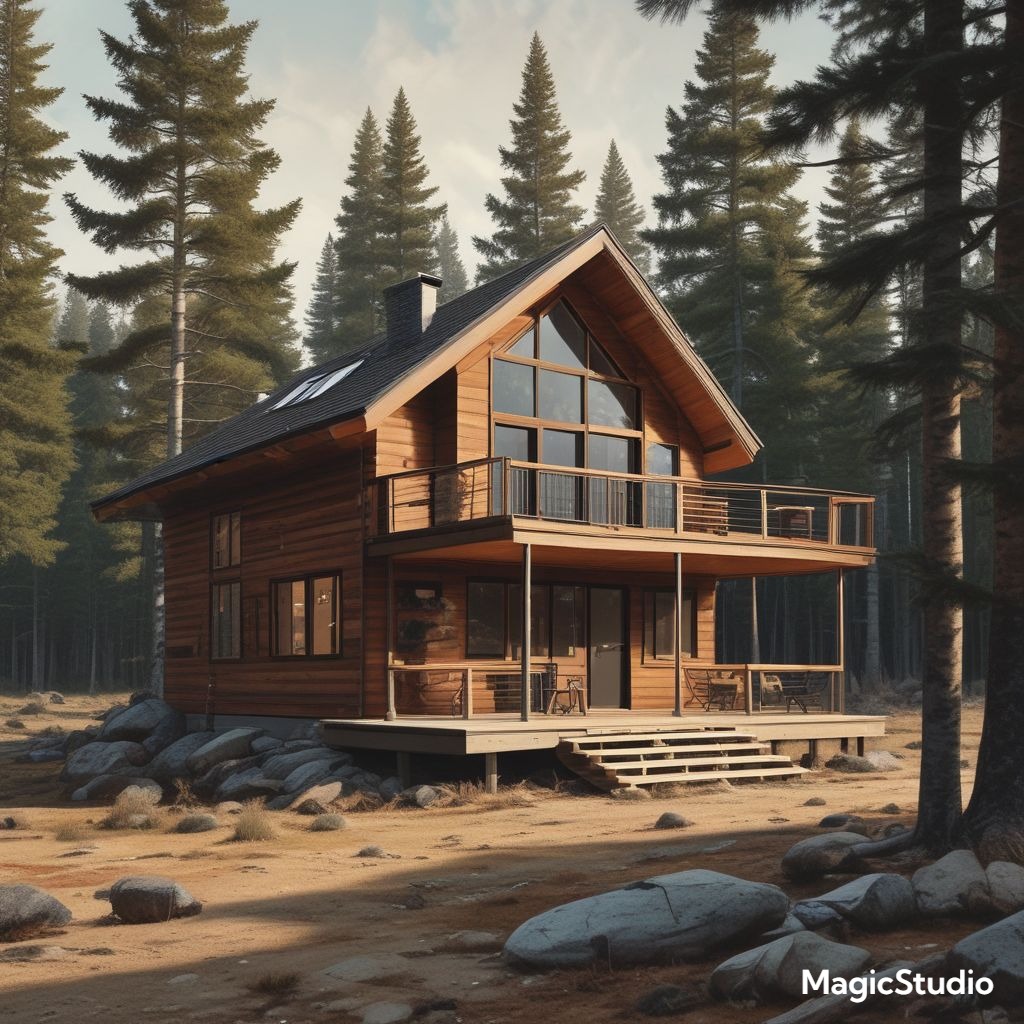
Monochromatic Color Palettes
Modern cabin interiors often feature monochromatic color palettes, using various shades of a single color to create a cohesive and calming atmosphere. This approach can range from the classic gray and white to the more adventurous use of deep greens, blues, or even earthy browns. In the US, a minimalist palette of white and gray is popular for its clean and modern feel, while in the EU, bolder colors like dark greens and blues are often used to complement the natural environment. Monochromatic schemes create a sense of tranquility and allow the beauty of the natural surroundings to be the focal point.
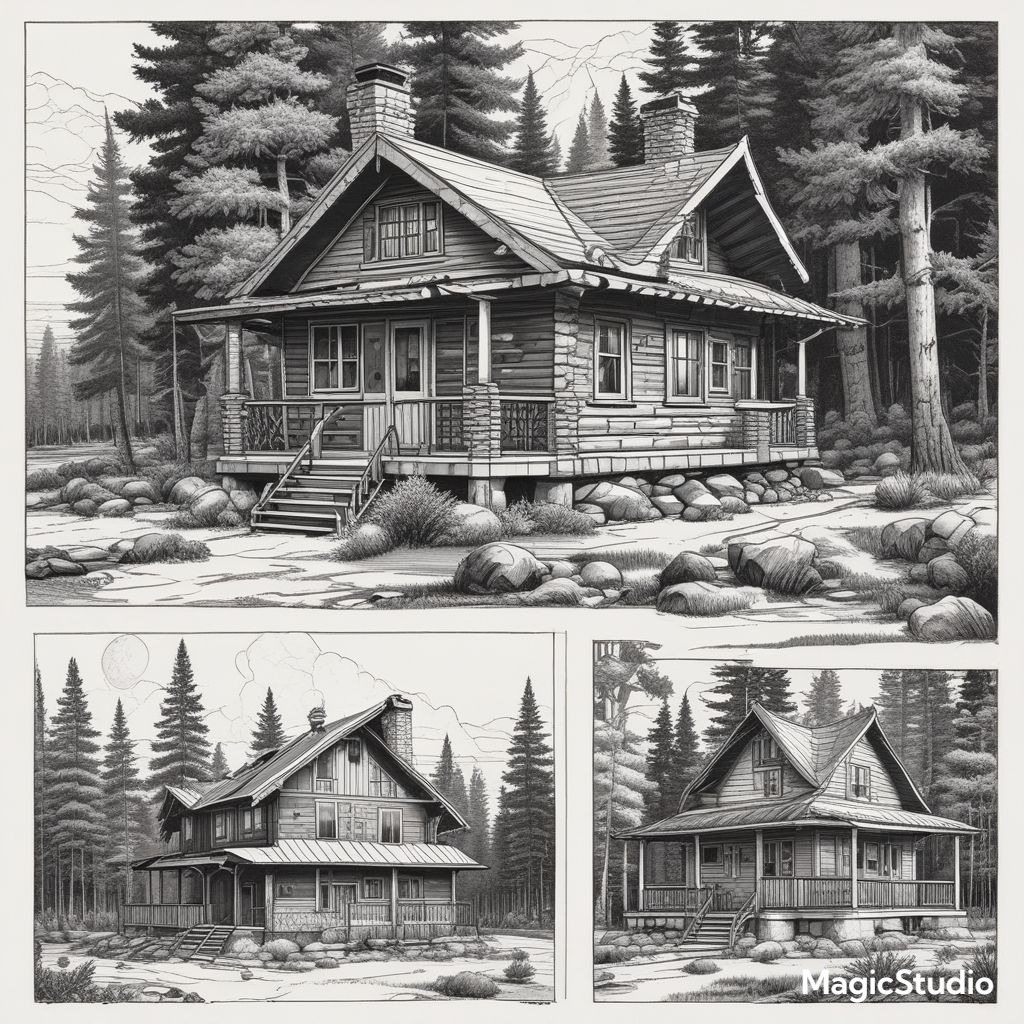
Geometric Shapes and Accent Walls
Modern cabin interiors often incorporate geometric shapes to add visual interest and break up the monotony of a minimalist design. This can be achieved through furniture, light fixtures, or even accent walls. For example, a geometric pattern on an accent wall can create a focal point and add a touch of personality. In the US, bold geometric shapes are often used to create a contemporary feel, while in the EU, more subtle geometric accents are frequently used to add visual interest without overpowering the overall design. These shapes can range from simple squares and triangles to more complex patterns, adding a modern touch to the cabin’s aesthetic.
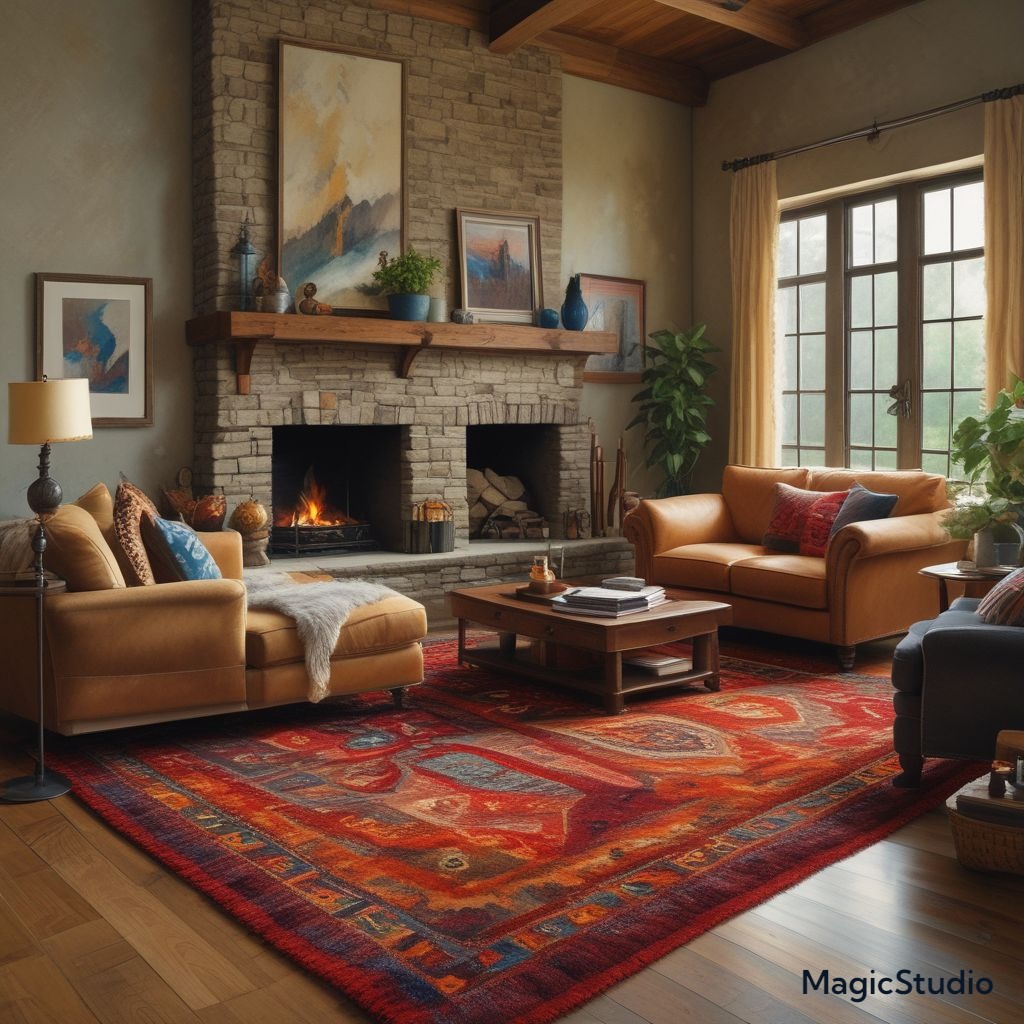
Sustainable Features and Energy Efficiency
Modern cabins are increasingly designed with sustainability in mind. This includes features like solar panels, rainwater harvesting systems, and energy-efficient appliances. These choices reduce the environmental impact of the cabin while creating a more self-sufficient lifestyle. In both the US and EU, sustainable design practices are becoming increasingly important, with homeowners seeking eco-friendly solutions. These features not only contribute to a greener footprint but also provide long-term economic benefits by reducing energy bills.
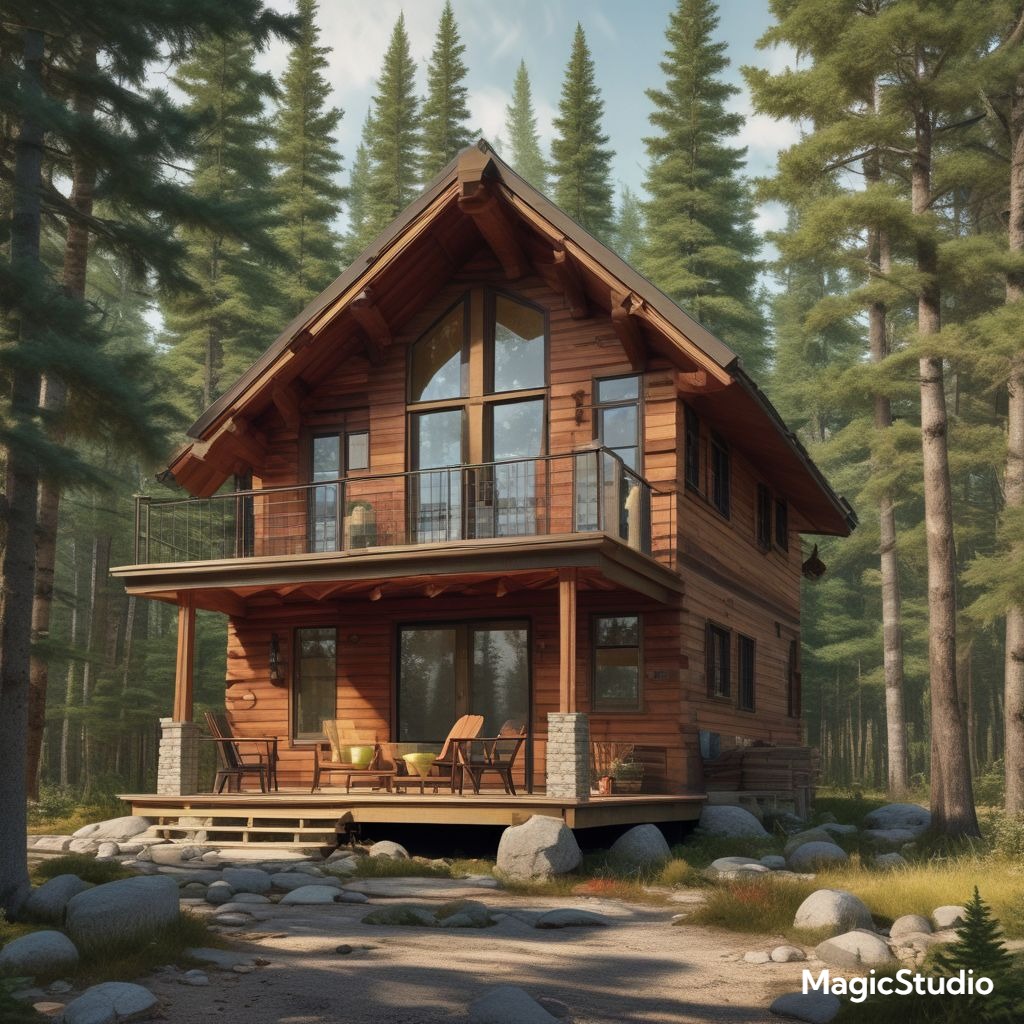
Large, Overhanging Eaves
Overhanging eaves are a common feature in modern cabin designs, serving both aesthetic and functional purposes. They create a sense of shelter and protection, while also providing shade from the sun. Overhanging eaves can enhance the visual appeal of the cabin, adding a distinctive architectural element. This design feature is popular in both the US and EU, particularly in areas with intense sunlight or heavy rainfall. The overhanging eaves create a sense of depth and dimension, adding a unique character to the cabin’s exterior.
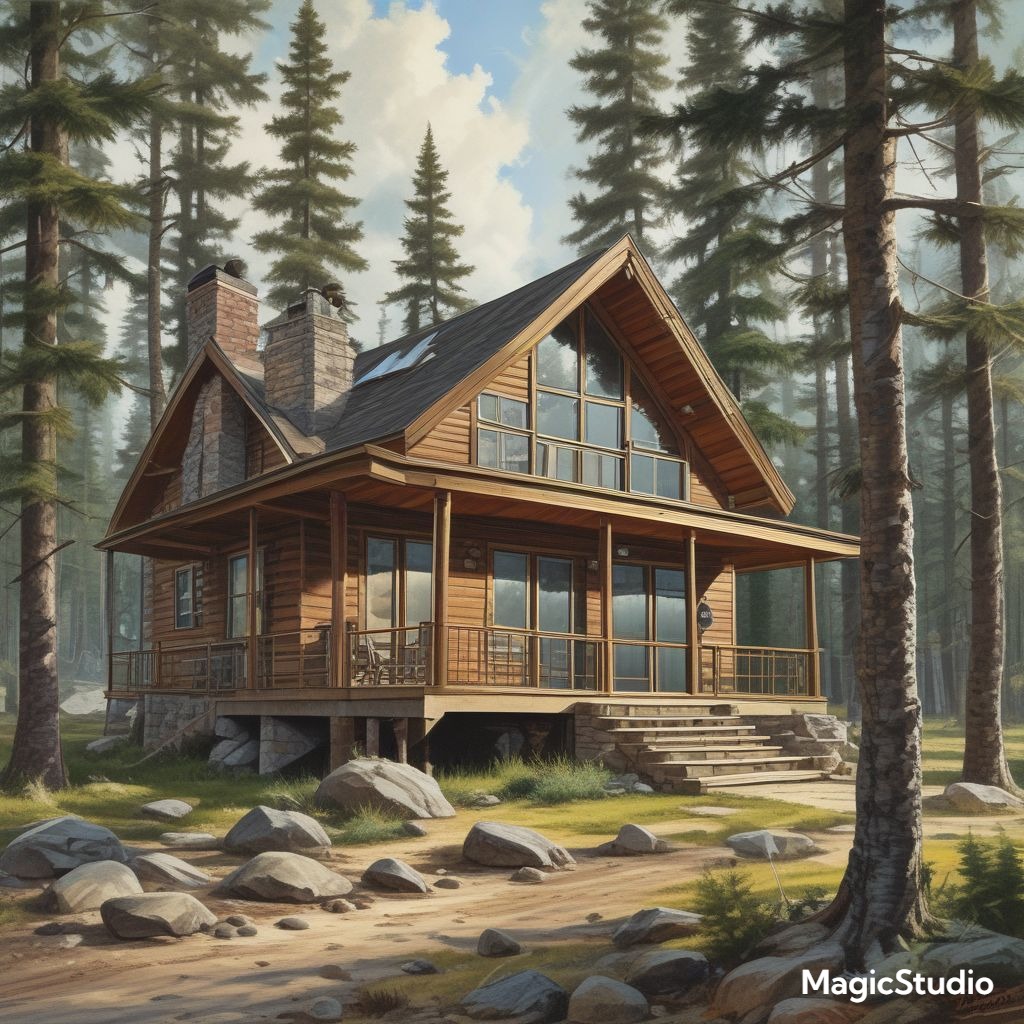
Fireplace as a Focal Point
A fireplace is often the focal point of the living area in a modern cabin, adding warmth and visual interest. The choice of fireplace design can range from sleek, modern styles to rustic, stone-clad options. In the US, fireplaces are often a central feature of living spaces, particularly during colder months. In the EU, fireplaces are also popular, adding a cozy and inviting atmosphere to the cabin. The fireplace becomes a gathering spot for family and friends, fostering a sense of togetherness.
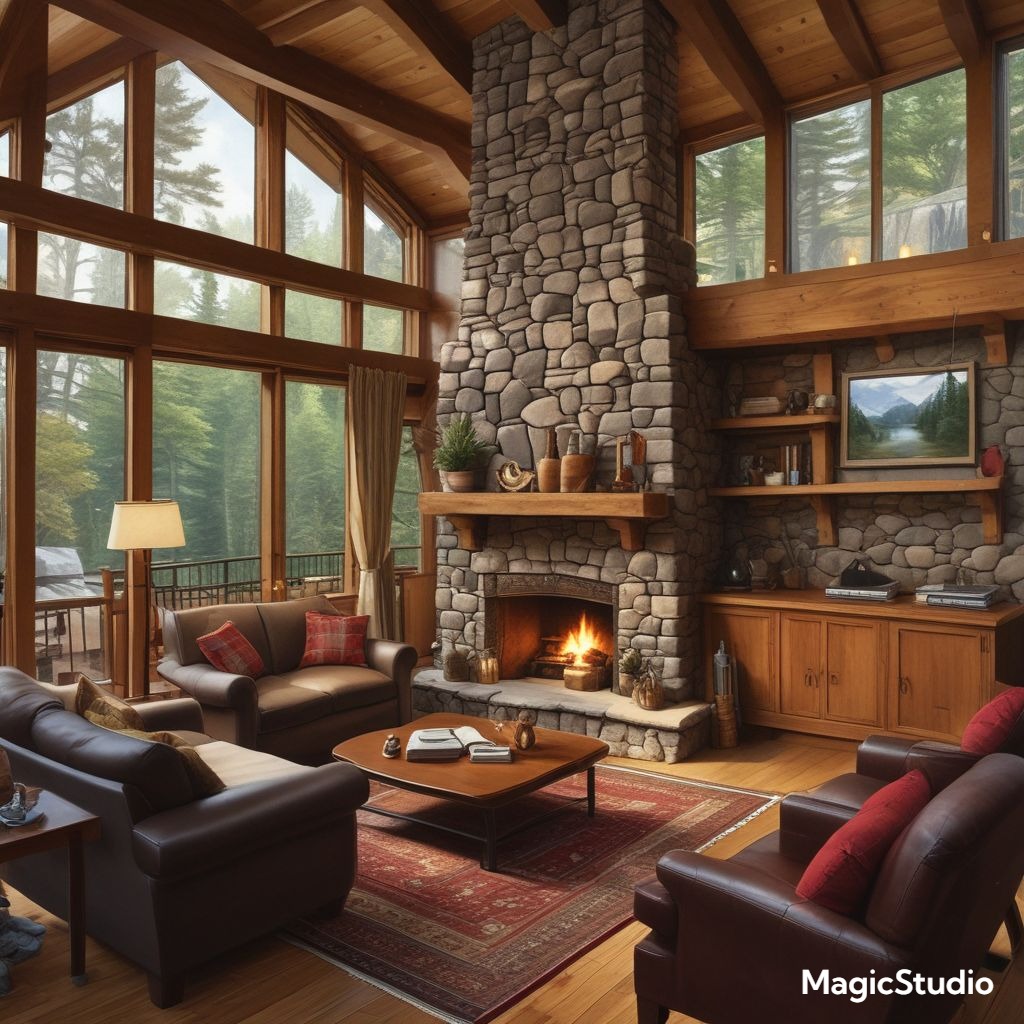
Outdoor Living Spaces
Modern cabins often prioritize outdoor living, with expansive decks, patios, or covered porches. These spaces provide a seamless connection between the interior and exterior, extending the living area and creating a natural flow between the two. In the US, outdoor living spaces are often used for entertaining guests, barbecuing, or simply relaxing in nature. In the EU, they are used for similar purposes, creating an extension of the living area and allowing residents to enjoy the outdoors. The emphasis on outdoor living creates a sense of harmony with nature and allows residents to fully embrace the beauty of their surroundings.
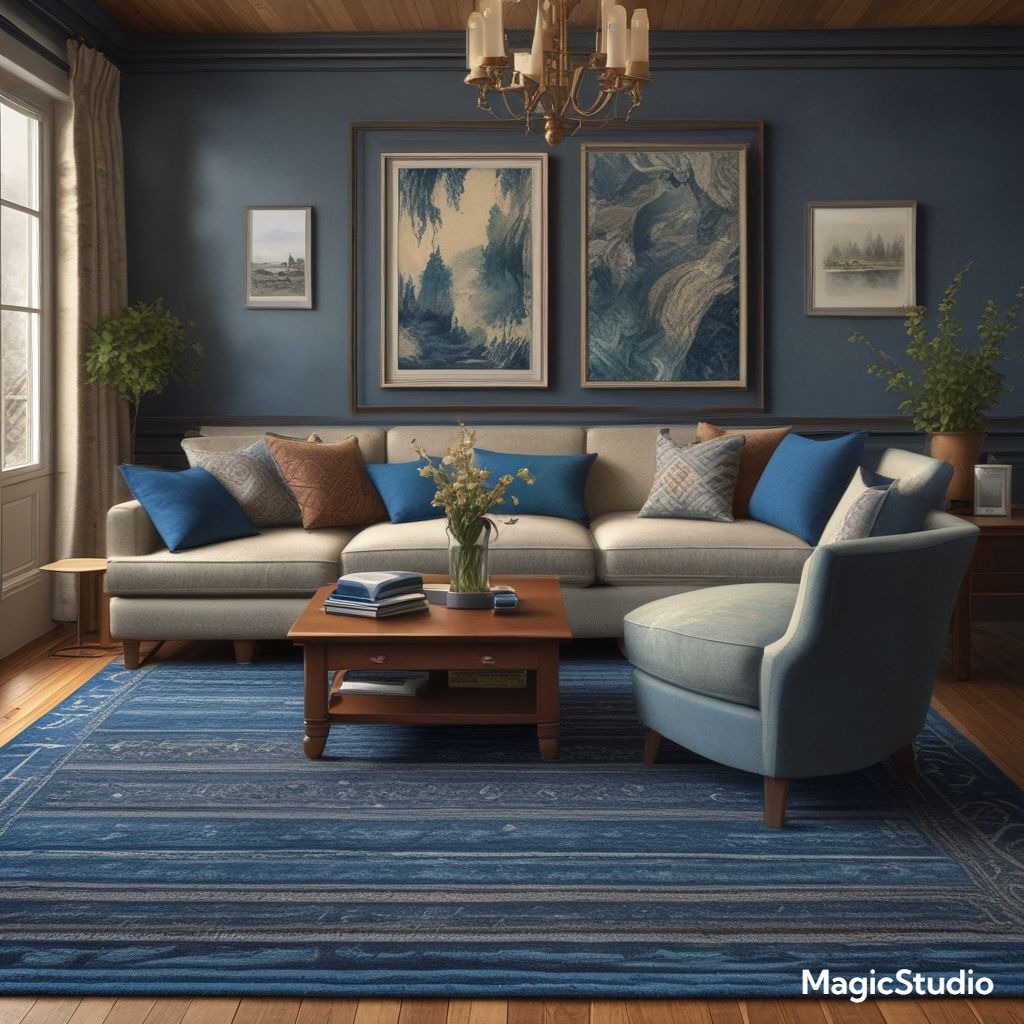
Integrated Kitchen and Dining Area
Modern cabin design often features an integrated kitchen and dining area, creating a seamless flow and maximizing the use of space. This layout is particularly popular in smaller cabins, where space is at a premium. The kitchen is typically designed with modern appliances, clean lines, and a minimalist aesthetic, while the dining area may be integrated into the open plan or separated by a subtle dividing element. In the US and EU, this integrated design is embraced for its functionality and the ability to create a more social atmosphere. The integration of the kitchen and dining area encourages family and friends to gather and share meals.
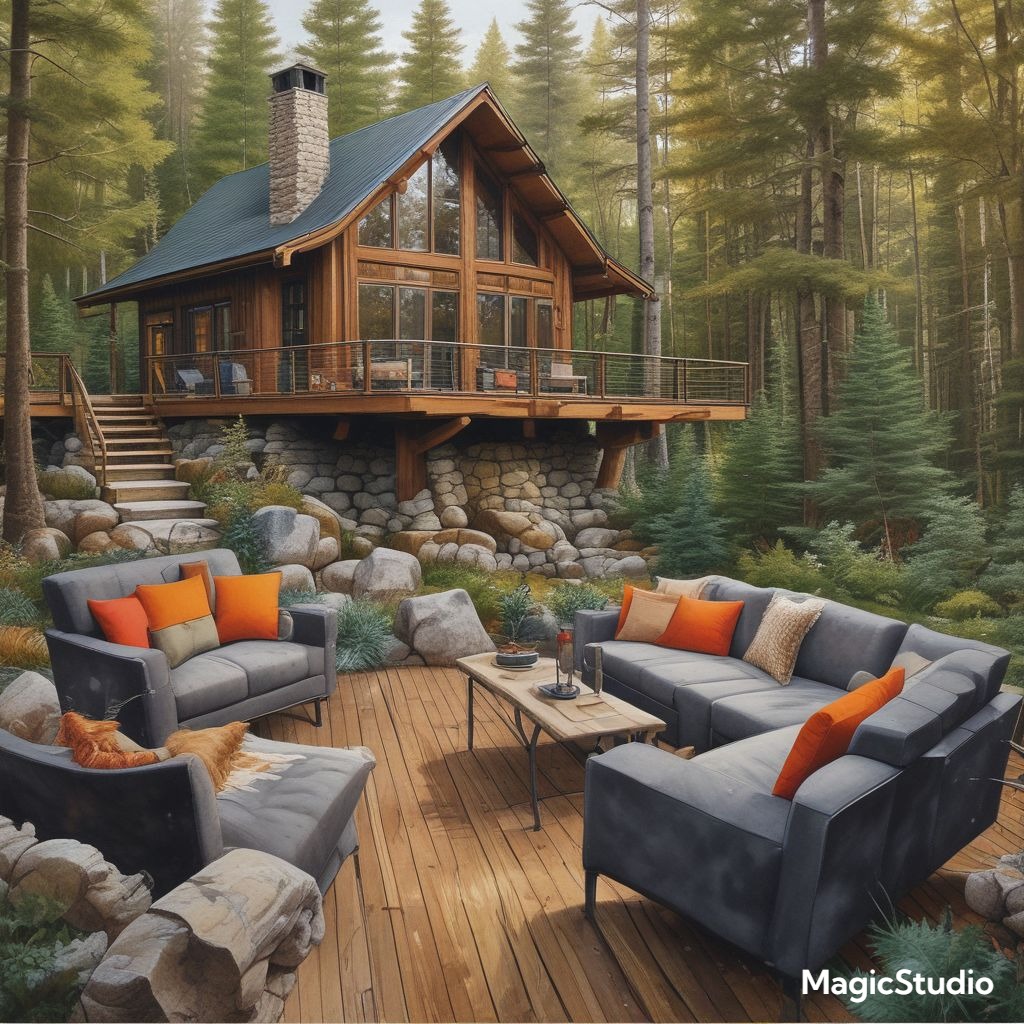
Master Suite with Private Bathroom
Modern cabin plans often include a master suite with a private bathroom, offering a sense of privacy and luxury. The master suite typically features a spacious bedroom, a walk-in closet, and a luxurious bathroom with modern fixtures and finishes. In the US, master suites are a common feature in luxury homes, and the trend extends to modern cabin designs. In the EU, master suites are also popular, with a focus on creating a tranquil and relaxing space for the homeowner. The private bathroom allows for a sense of personal retreat and creates a space for relaxation and rejuvenation.
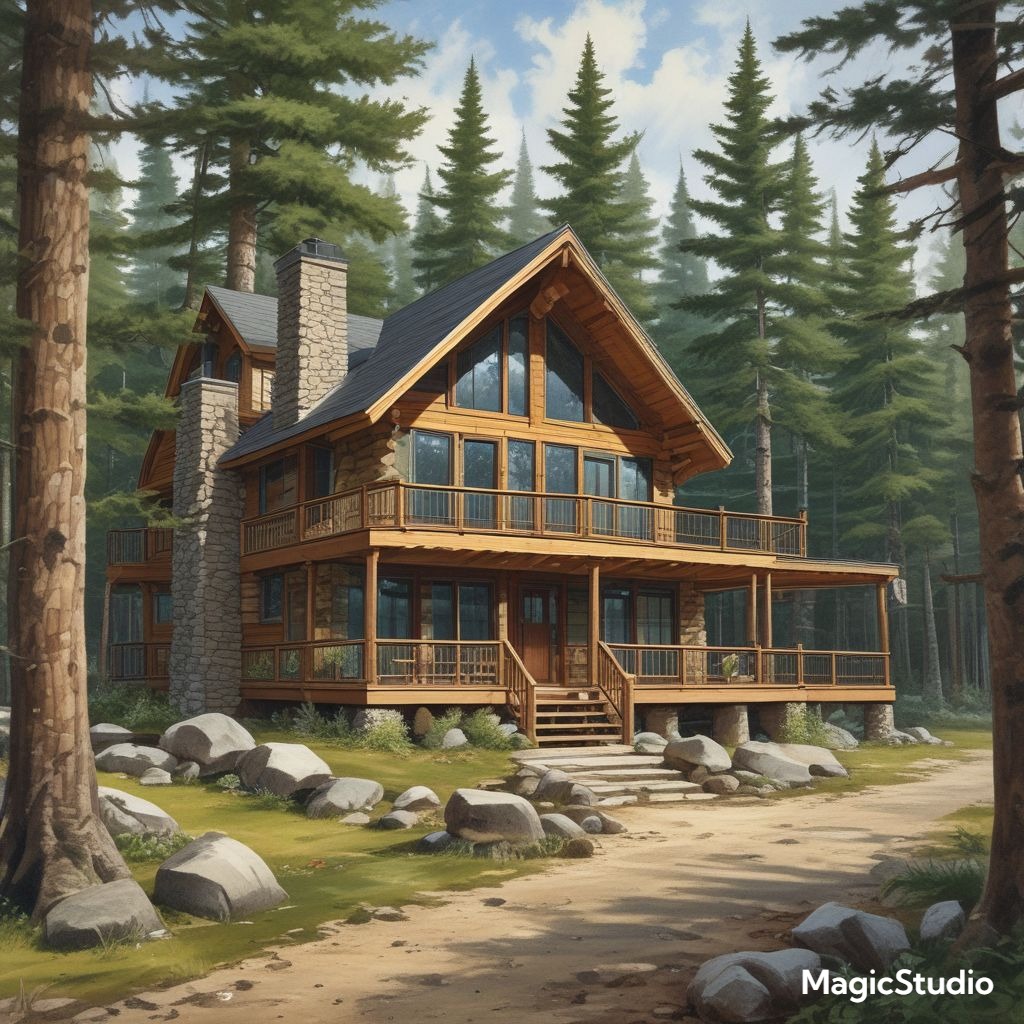
Guest Bedrooms with Flexible Functionality
Guest bedrooms in modern cabins often feature flexible functionality, serving as both a sleeping space and a potential home office or study. This design approach maximizes space and allows the cabin to adapt to various needs. In the US and EU, this flexible approach to guest bedrooms is becoming increasingly popular, as people seek versatility in their living spaces. The inclusion of a desk or workspace allows the guest bedroom to serve multiple purposes, providing a practical and adaptable solution.
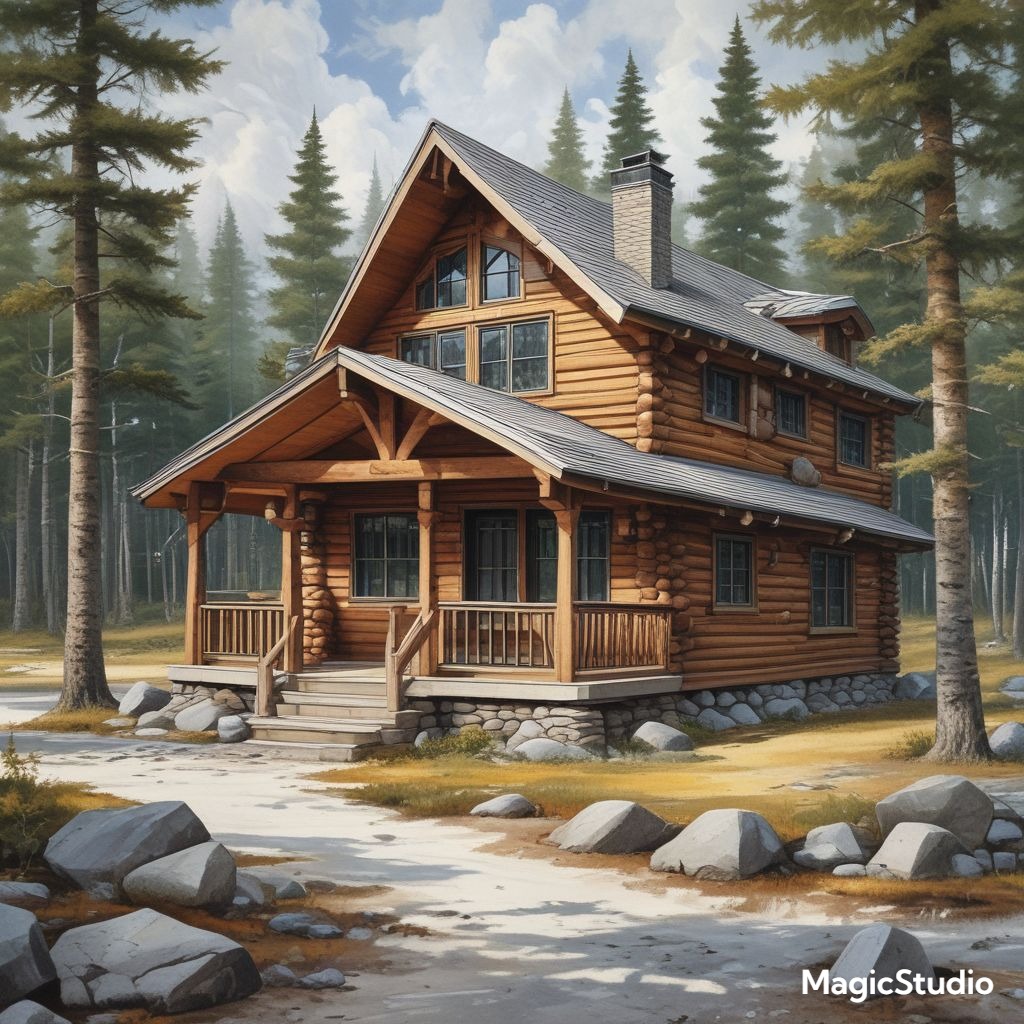
Large Windows with Panoramic Views
Modern cabins often feature large windows that frame panoramic views of the surrounding nature. These windows can be floor-to-ceiling, creating a sense of openness and blurring the boundaries between the interior and exterior. In the US and EU, large windows are popular for their ability to bring natural light into the cabin and create a connection with the landscape. The panoramic views add a sense of tranquility and allow residents to fully immerse themselves in the beauty of their surroundings.
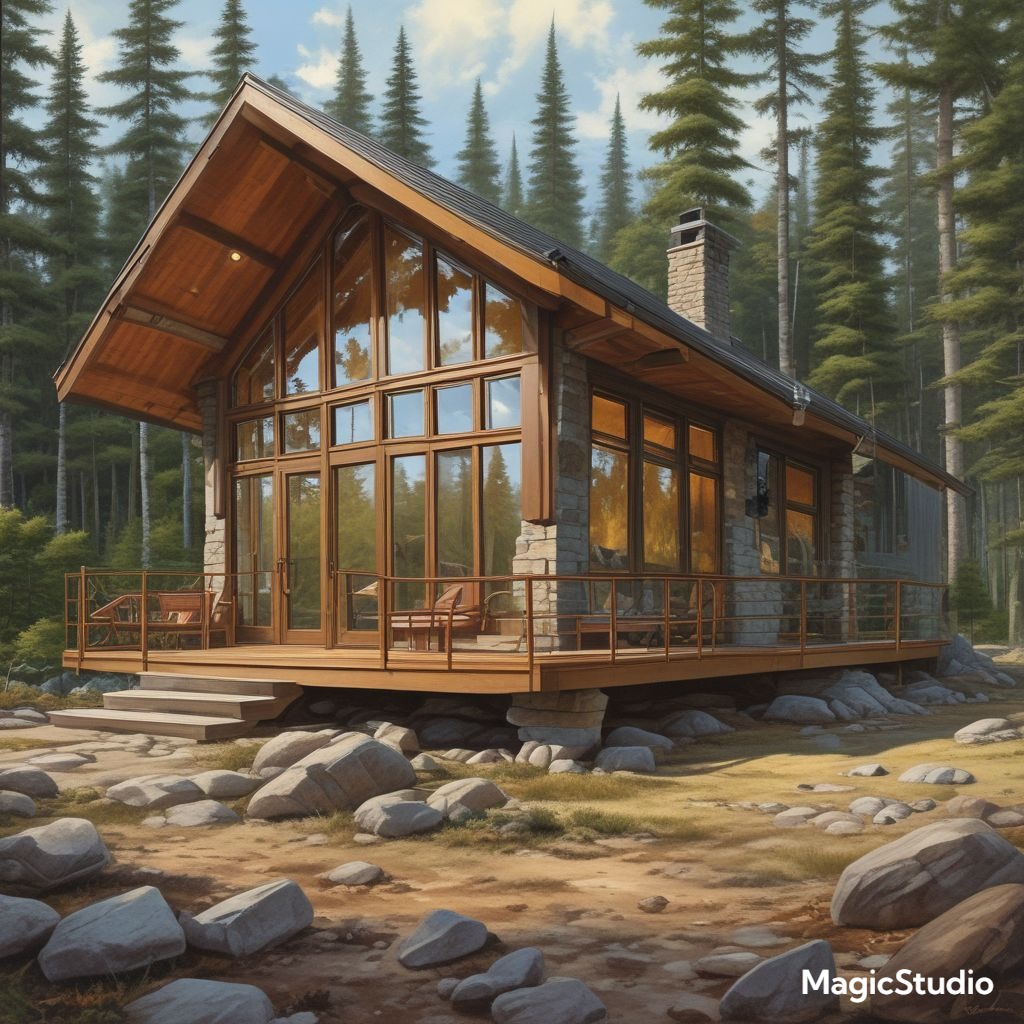
Natural Light Maximization
Modern cabins are designed to maximize natural light, using large windows, skylights, and lightwells to illuminate the interior. This approach creates a brighter and more inviting atmosphere. In the US and EU, maximizing natural light is a common design principle, reducing the need for artificial lighting and promoting a healthier living environment. The use of natural light can also enhance the perceived size of the cabin, making it feel more spacious.
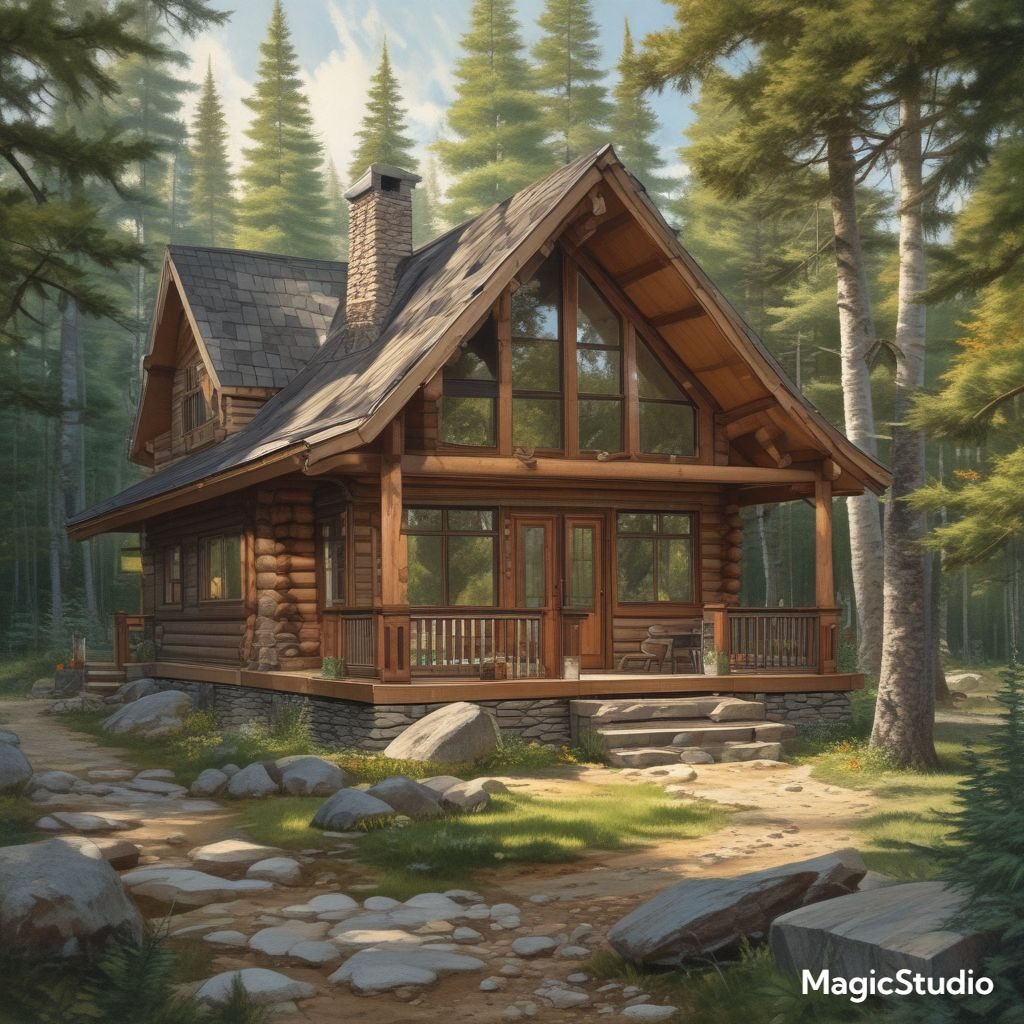
Sustainable Lighting Solutions
Modern cabin designs often incorporate sustainable lighting solutions, such as LED bulbs, solar-powered lights, and motion sensors. These choices reduce energy consumption and contribute to the cabin’s eco-friendly footprint. In the US and EU, sustainable lighting solutions are becoming increasingly popular, with homeowners seeking to reduce their carbon footprint and lower energy bills. The use of sustainable lighting can also enhance the ambiance of the cabin, creating a warm and inviting atmosphere.
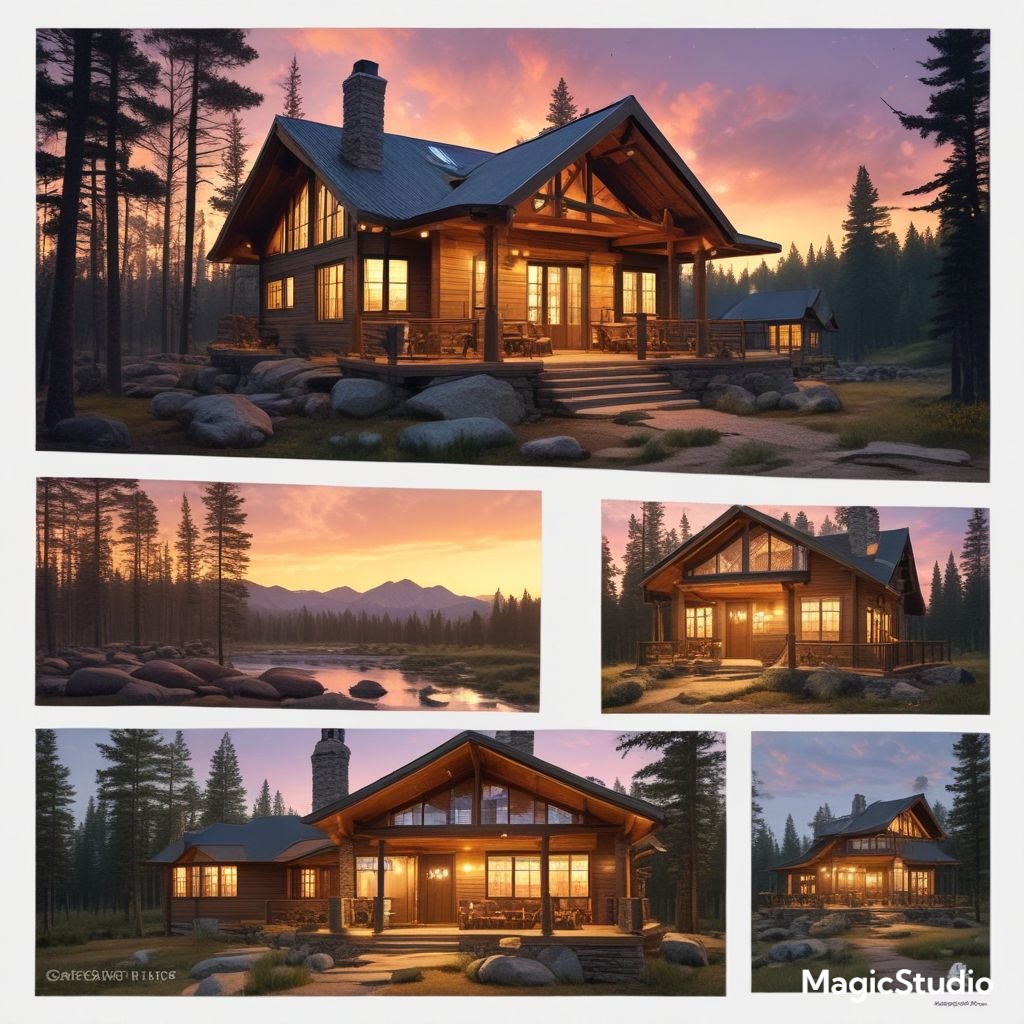
High-Quality Flooring Materials
Modern cabins often feature high-quality flooring materials, such as engineered hardwood, tile, or natural stone. These materials are durable, easy to maintain, and create a sophisticated and elegant look. In the US and EU, high-quality flooring materials are a common feature in modern homes, and this trend extends to modern cabin designs. The choice of flooring material can significantly impact the overall aesthetic of the cabin, creating a sense of warmth, luxury, or minimalist simplicity.
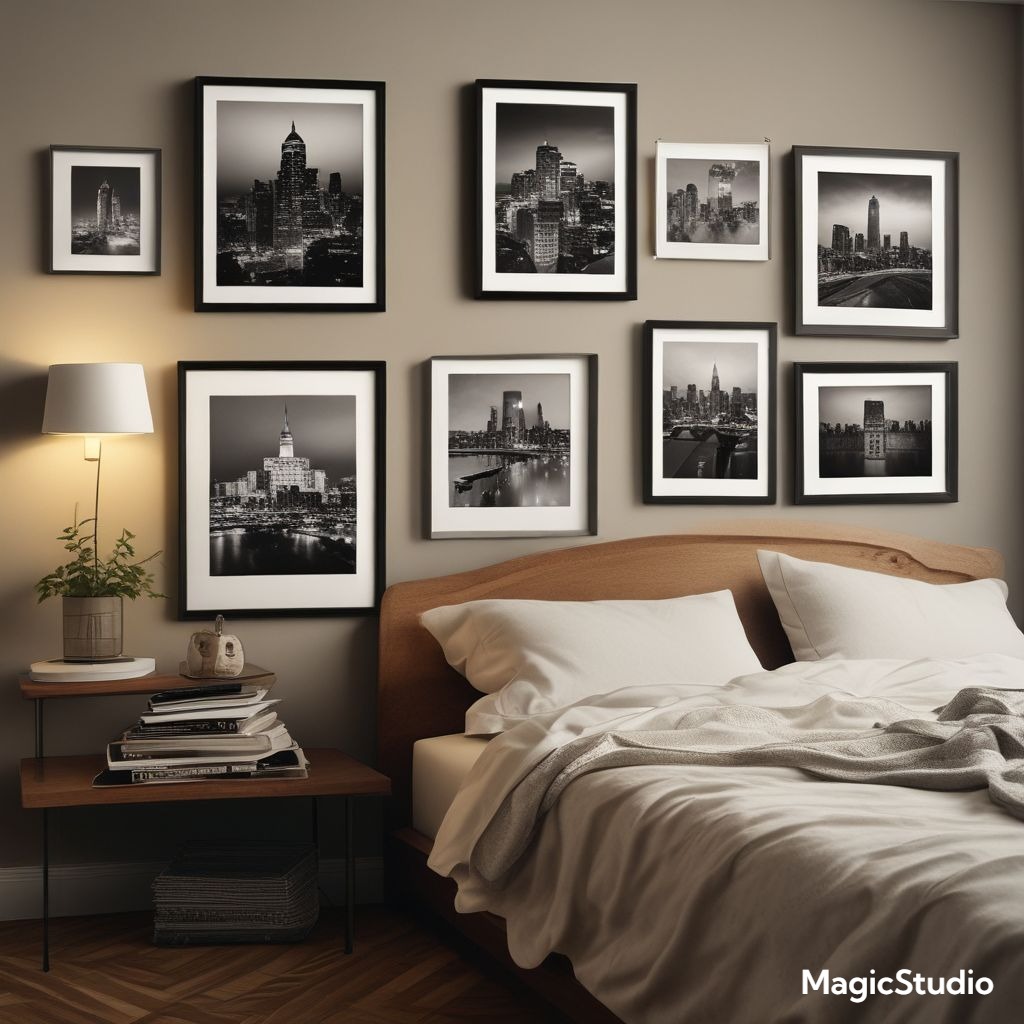
Modern Kitchen Appliances
Modern cabin kitchens are typically equipped with high-end appliances, such as stainless steel refrigerators, induction cooktops, and built-in ovens. These appliances offer advanced features, energy efficiency, and a sleek, modern aesthetic. In the US and EU, modern kitchen appliances are highly sought after for their functionality, style, and ease of use. These appliances contribute to the overall modern feel of the cabin and enhance the cooking experience.
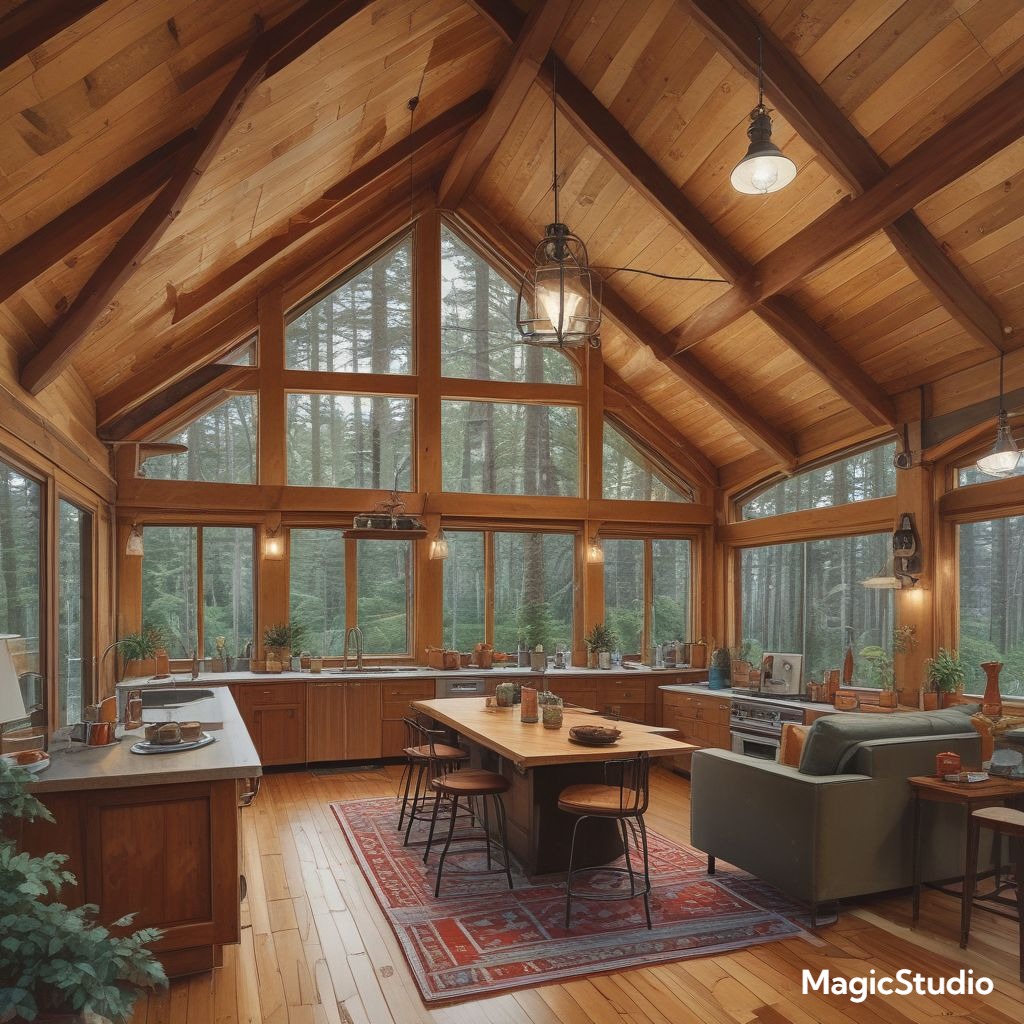
Smart Home Features
Modern cabins are increasingly incorporating smart home features, such as voice-activated controls, automated lighting, and security systems. These technologies enhance convenience, comfort, and security. In the US and EU, smart home technology is becoming increasingly prevalent, allowing homeowners to control their environment remotely and optimize their daily routines. The integration of smart home features can contribute to a more efficient and enjoyable living experience.
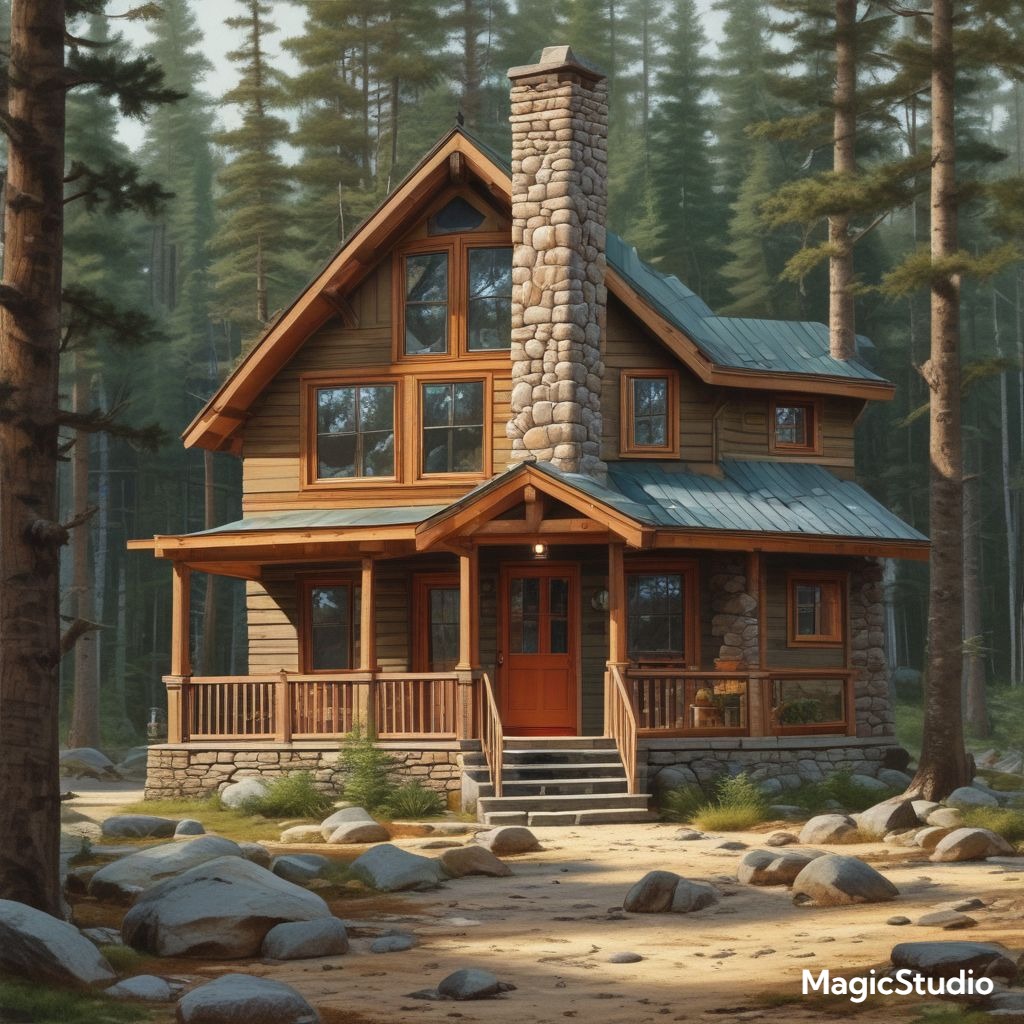
Rustic Elements with Modern Flair
Modern cabin designs often incorporate rustic elements with a modern twist, blending the traditional charm of a cabin with contemporary styling. This can be achieved through the use of reclaimed wood, exposed beams, and stone accents. In the US, this blend of rustic and modern is popular for its unique aesthetic, while in the EU, it often reflects a connection to traditional building methods with a contemporary twist. The fusion of styles creates a warm and inviting atmosphere that embraces both the past and the present.
